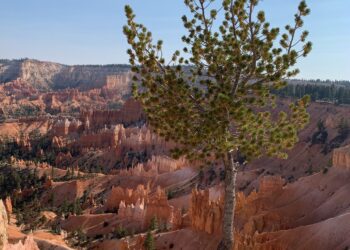Who knew mountain lions have green claws
By Benjamin Alva Polley EBS COLUMNIST
Mountain lions (puma concolor) nomenclature includes catamount, cougar, ghost cat, mountain cat, panther, painter, puma, screamer, wildcat, and now “gardener” due to a recent study published in Landscape Ecology by Mark Elbroch. The research revealed that mountain lions are ecosystem engineers who fertilize the landscape from kills they make by depositing nutrients in the soil that help improve plant quality, making specific areas lusher and therefore attracting more ungulates like deer, elk, goats, moose, and sheep to browse there in the future.
Mark Elbroch is the puma program director at Panthera. He and his team tracked 50 mountain lions within the Greater Yellowstone Ecosystem over almost four years. They mapped where lions left their kill sites, a total of 172 carcasses, and documented this “gardening behavior.” Their kills were only found in small areas of a mountain lion’s range. The team collected soil and plants beneath those carcasses every three to six months and tested the nitrogen and energy content release for three years.
The test results revealed that nitrogen increased in the soil thanks to decomposing carcasses.
Nitrogen is a crucial nutrient for plant growth. Where animal carcasses were left to rot left lusher landscapes, triggering more plant biodiversity and denser food sources for future generations of herbivores—but also creating the cover for lions to hide behind. Mountain lions’ favorite method of hunting is to stalk and ambush their prey.
Lions kill more than other predators, leaving behind a rich array of gut piles for other animals including birds, insects, rodents and other scavengers, and enriching the soil. This, in turn, makes the grass healthier and shrubs thicker, which in the long run encourages deer and elk to return and feed repeatedly. It continues the cycle of attracting prey who get preyed upon, providing the plants, and making them lusher. Lions probably don’t intentionally do this, but it is a byproduct of their hunting prowess.
Few predators are as stealthy as mountain lions. They are cryptic by nature, creatures of the edges that use cover in topography and vegetation that they promote. Cats are crepuscular, stalking night’s ecotone of dawn and dusk when prey species struggle to decipher the shadowed landscape. They are the ninjas of the forest, meadow and mountain, self-launching missiles that shoot and take down prey species. Lions can leap 30 feet from a standstill and 18 feet straight up. Biologists estimate their hunting success rate is upward of 75%. They strictly eat meat and typically attack from the rear. Full-grown cougars can take down mature bull elk, moose and horses. Their jaws are opposable, going up and down and side to side, and can administer a lethal bite. Nature at its mathematical finest makes it such that the lion’s canine teeth are spaced precisely to fit around a deer’s cervical vertebrae, making the neck snap precisely and quickly.
Montana Fish, Wildlife and Parks lion biologist and author of “Path of the Puma,” Jim Williams, writes that mountain lions succeed because they “stay invisible, stalk silently, ambush instantly, and go for the soft spots. Paws like meat hooks, wrapping the flanks, rake forward to the trachea, away from hooves and antlers, and crush the windpipe. Fast, effective, and deadly.”
These ninjas are also the landscapers who come in the middle of the night or early morning to tend the garden.
“Each study and glimpse into the secret lives of pumas reveals that their behaviors and contributions to nature are far more complex than imagined,” Dr. Elbroch stated in a press release. “Pumas contribute over a million [kilograms] of meat to ecosystems every day, improving the quality of soil and plant life, feeding hundreds of species, and supporting the health of their ecosystems and our planet’s overall web of life.”
Evidence provided by this recent scientific report shows the importance of conserving mountain lions and keeping this apex predator on the landscape and voicing opinions against Montana’s Wildlife Commission’s decision to raise the quota on harvesting lions.















